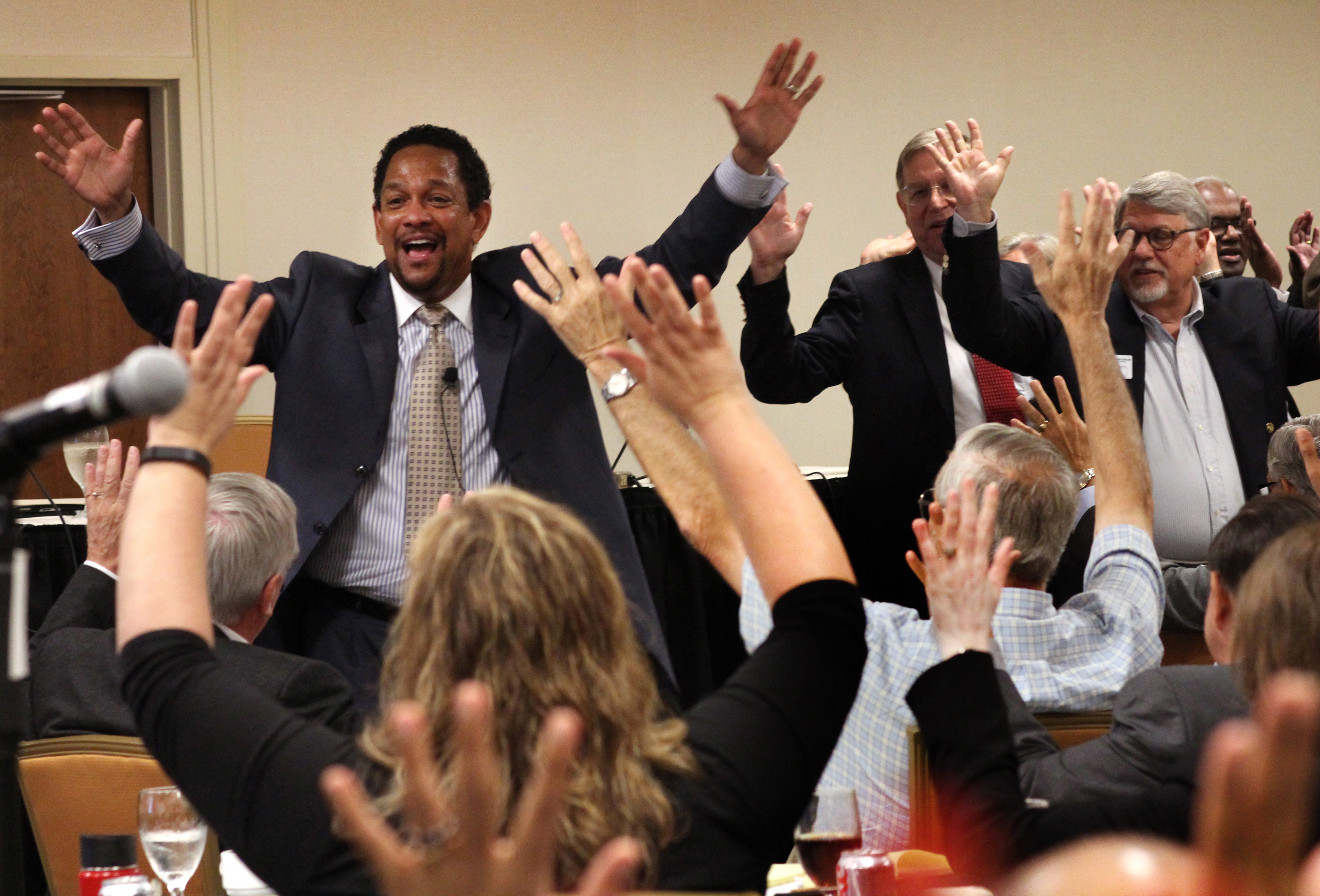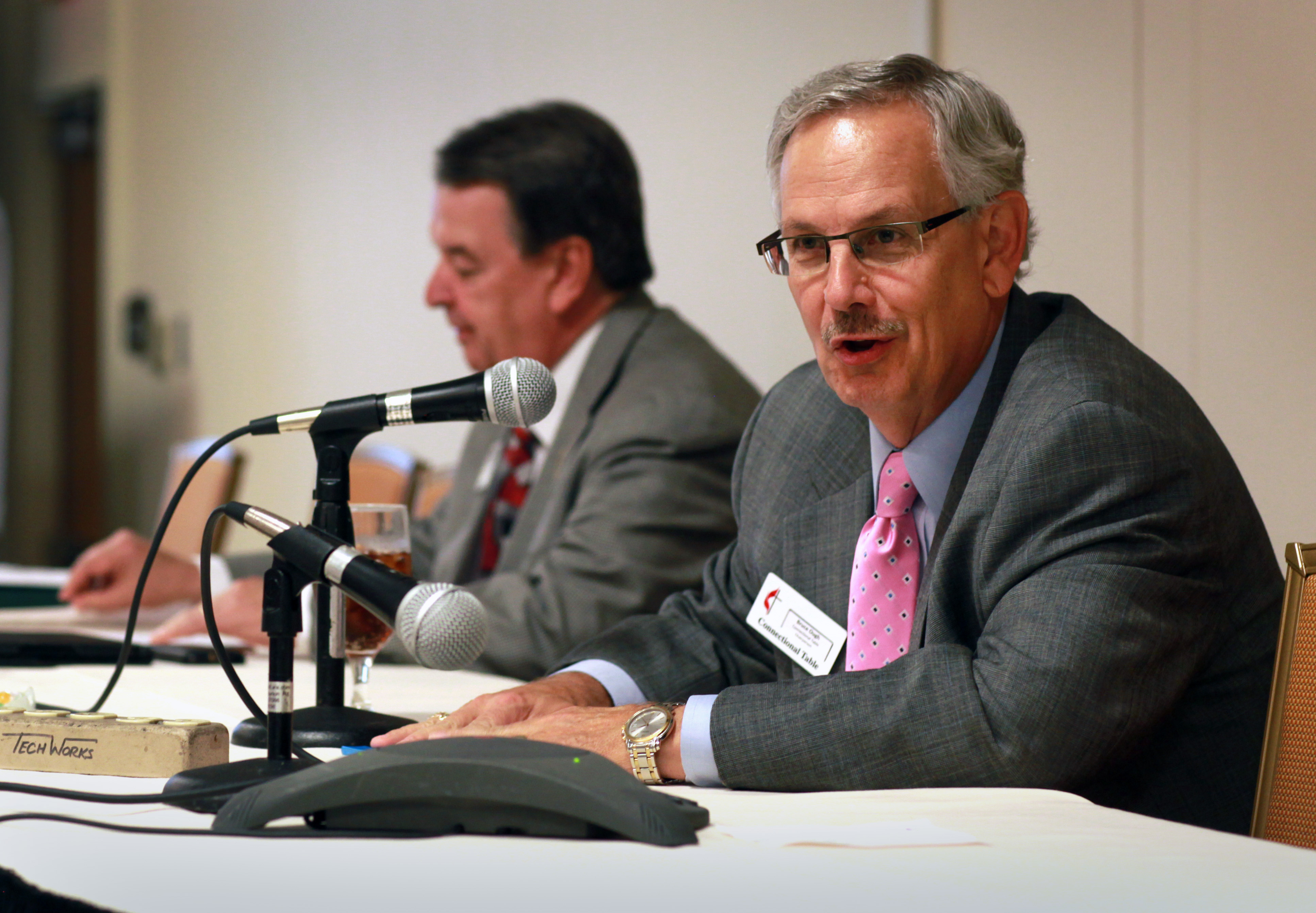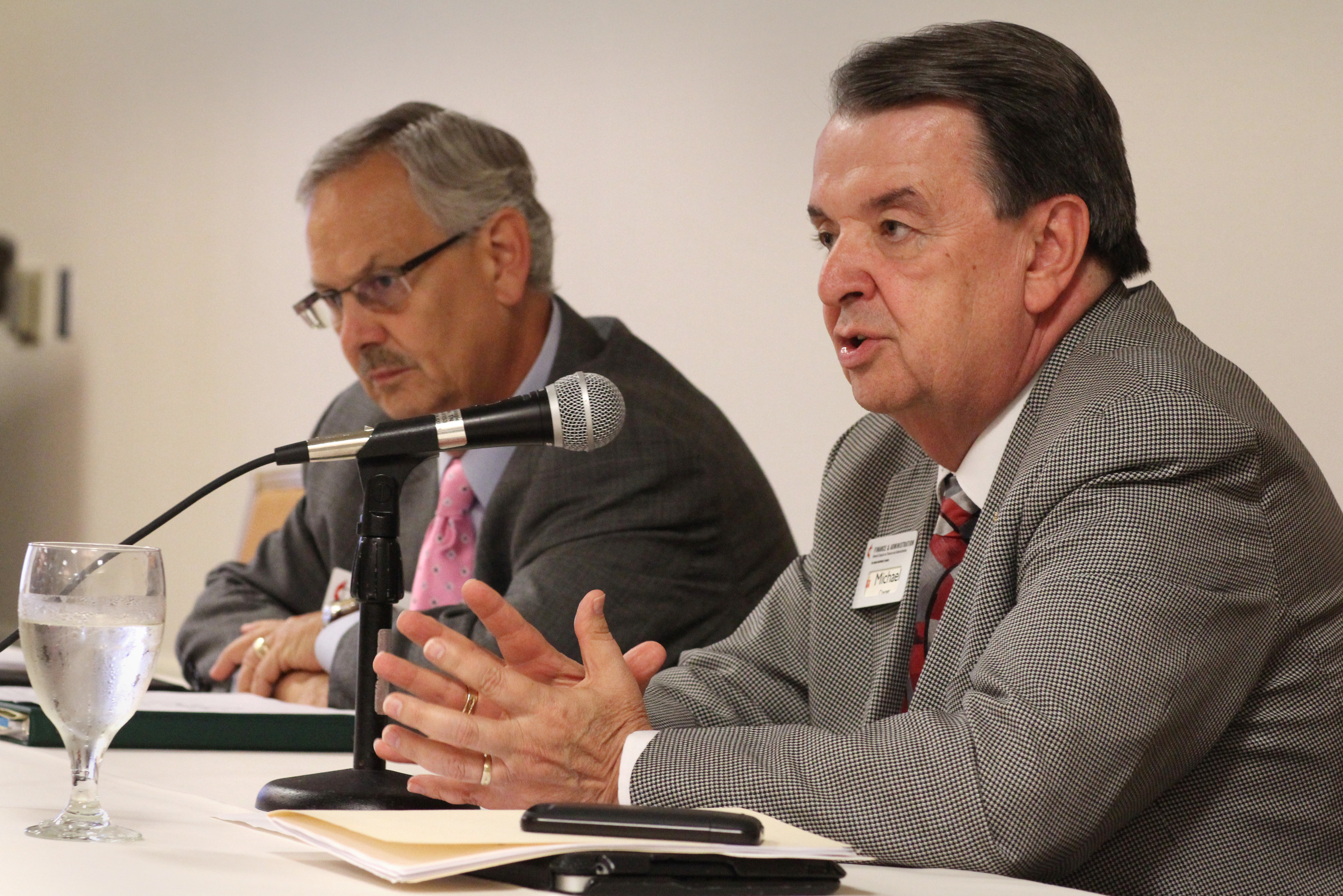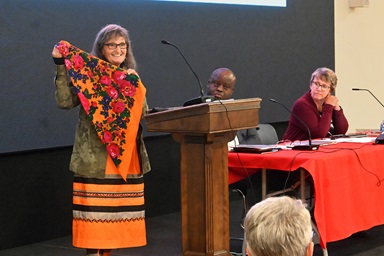The denomination’s general agencies soon will start preparing the budget proposals that will go before the 2016 General Conference, and for now they expect to have slightly more money.
In a joint meeting, the General Council on Finance and Administration's board and the Connectional Table’s finance committee on Aug. 21 approved a bottom-line budget of $611.4 million for general church funds in 2017-2020. That’s about a 1.4 percent increase above the $603.1 million general church budget approved at the 2012 General Conference.
What Are Apportionments?
Apportionments are the share each annual conference or local church pays to support international, national and regional missions. At the general church level, the money supports seven apportioned funds. These include bishops, United Methodist ministerial education, most general agencies and denomination-wide efforts such as the Black College Fund and Africa University in Zimbabwe.
About 2 percent of local church dollars supports the denomination's seven apportioned funds. This percentage does not include special offerings churches take up such as collections for Special Sundays or Advance designated giving to disaster relief.
Still, the projected bottom line is below previous general-church budgets approved by General Conference in 2004 and 2008. General Conference is the denomination’s top lawmaking body. In 2008, before the economic downturn, the assembly set a budget of more than $641 million.
One question still before church leaders is whether to add a proposed special allocation on top of the $611.4 million. The allocation would fund grants for annual (regional) conferences to use to foster more vital congregations. But the Aug. 21 meeting did not provide any details about what those grants might look like or which agencies would distribute them.
“This is only the beginning,” Moses Kumar, the finance agency’s top executive, told United Methodist News Service. “Agencies now have something to work on. …Budgets were going down, so this represents a small increase. We’re hoping that will be a good beginning.”
Impact of economic forecasts
Kumar noted that the approved bottom line is also below a realistic budget proposal of $628.4 million suggested by the Economic Advisory Team, a group of eight United Methodist economists and other financial professionals.
The team, which is independent of any church agency, based its recommendation on forecasts around such variables as: the U.S. gross domestic product, inflation, the Dow Jones Industrial Average and United Methodist-specific data including giving per attendance. At this point, the U.S. church supports the bulk of general church finances.
The team forecasts that the U.S. church will continue to see its average weekly attendance decline about 1.6 percent a year. But the team also predicted a payout rate of around 92 percent starting in 2017.
Since 1984, the Economic Advisory Committee has had a good track record projecting how much money will be collected at the general church level, usually within a percentage point of what’s actually received.
But some GCFA board members were skeptical of a predicted collection rate of more than 90 percent. Last year, the general church received about 89 percent of requested apportionments.
Kumar said he expected more conversation around the team’s budget recommendation at the General Council on Finance and Administration’s next meeting in November.
Possible vital congregations’ fund
By far, the biggest source of debate was whether there should be a special allocation at the general church level to support vital congregations.
Grants for Vitality
Church leaders still are weighing the question of a special general church fund for vital congregations. For now, General Council on Finance and Administration board on Aug. 22 has approved $300,000 to be used toward the effort of fostering more vital churches.
The Connectional Table and active bishops also approved the allocation out of the World Service contingency fund.
• $100,000 will be used for a “Benchmark Strategy Study” by Don House, a lifelong United Methodist with a Ph.D. in economics. He is looking at ways churches can invest in growth.
• $200,000 will be used for grants which the United Methodist Board of Discipleship will distribute.
The Board of Discipleship will offer more information soon on how United Methodists can apply for grants.
The Budget Leadership Team, which includes leaders of the Connectional Table and General Council on Finance and Administration, had recommended an additional $17 million be allotted for agencies to award as grants for vital congregations. With that special allocation and the approved $611.4 million bottom line for apportioned funds, the Budget Leadership Team’s recommendation is in line with the Economic Advisory Committee.
But many of the church leaders at the meeting pushed back against the proposed vital-congregations fund. They argued that annual conferences could best determine how to use money for increasing vitality without waiting for grants from general agencies.
Indiana Area Bishop Mike Coyner, president of the finance agency, said that argument was already a big source of discussion among the Budget Leadership Team members.
He summed up the question before church leaders: “Do you focus better on vital congregations — which I think lots of us want to do — by leaving more in the hands of conferences? Or do you focus more by setting up a fund that’s visible and that says to the world that we’re serious about this?”
What happens next
For now, agencies will begin their budget preparations using the $611.4 million figure.
In November, the full Connectional Table and finance agency board agreed to set the same distribution among the seven general church funds as exists in the 2013-2016 period. That means the agencies and various funds will divvy up the financial pie roughly the same way in 2017-20 as they did in the current quadrennium. The decision on Aug. 21 gives agencies and Connectional Table a projection of the size of that pie.
Detailed budgets will go back before the full Connectional Table and General Council on Finance and Administration for approval in May 2015. Ultimately, the final budget will be up to General Conference, which will meet May 10-20, 2016, in Portland, Oregon.
What many of those voting Aug. 21 want to avoid is the kind of last-minute allocation that happened at the 2012 General Conference. That year, the legislative assembly voted for two new line items in the World Service Fund, which supports most United Methodist agencies. The delegates designated a $5 million fund for theological education in the central conferences — church regions in Africa, Europe and the Philippines — and $7 million to recruit and train young clergy in the United States.
That move required agencies to scramble to readjust their budgets and accommodate the $12 million, and it left $591.1 million altogether for general church funds.
Hahn is a multimedia news reporter for United Methodist News Service. Contact her at (615) 742-5470 or newsdesk@umcom.org.
Like what you're reading? Support the ministry of UM News! Your support ensures the latest denominational news, dynamic stories and informative articles will continue to connect our global community. Make a tax-deductible donation at ResourceUMC.org/GiveUMCom.






